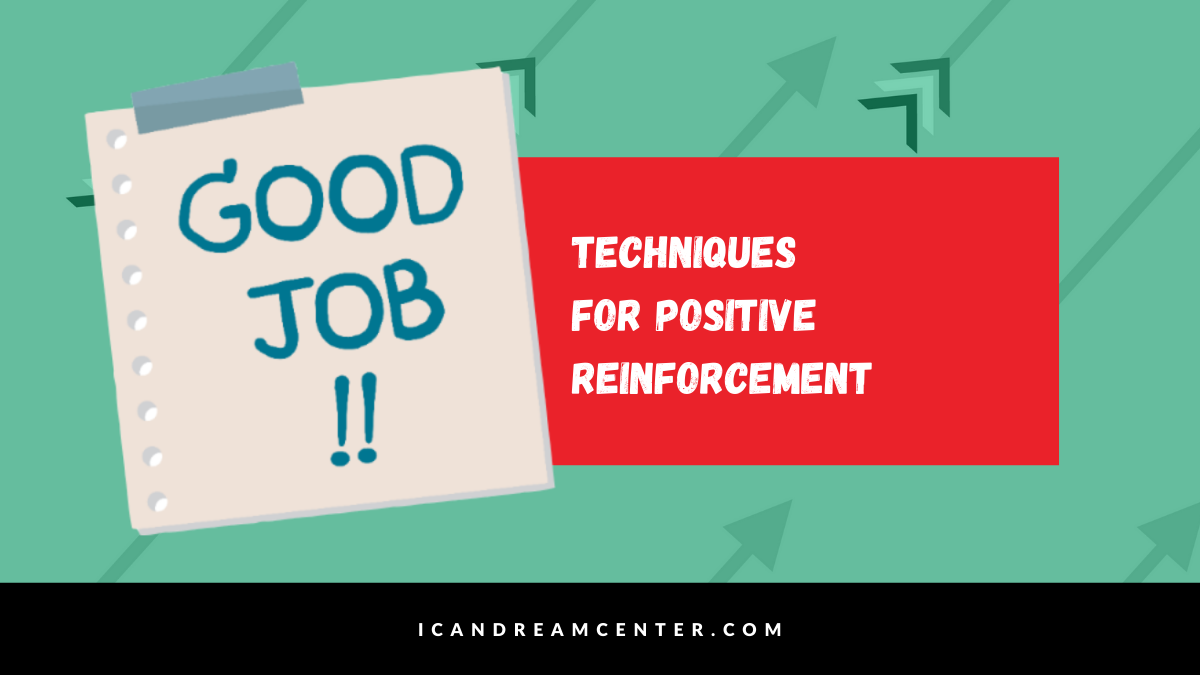
Techniques for Positive Reinforcement
At the iCan Dream Center, we support students with different diagnoses, one of which is autism. We apply many interventions to aid us in increasing desired behaviors for our students. Registered Behavioral Therapists on our team have the tools to serve our students as effectively as possible, and one highly effective instrument in their toolkit is positive reinforcement.
This intervention is used to decrease students’ adverse behavior and reward appropriate behavior. You do not need to be an RBT to use this tool. It can be learned and implemented by caretakers or even a student’s employer. It is likely that you are already using this tool in variation, and we can help you finetune what you are already doing.
Types of Positive Reinforcement
First, let’s gather a clear definition of positive reinforcement. According to Special Learning Inc., an autism education website for parents, teachers and therapists, the definition of positive reinforcement is “the presentation of positive events or rewards after a particular behavior to encourage the repetition of the act in the future. Examples: hugs, praises, toys or food.” There are many ways to reinforce positive behavior through token, tangible, social and natural reinforcers.
Utilizing social reinforcement through verbal praise comes the most natural to us all. Token reinforcement is giving a child a point or token system that rewards them along the way, and these tokens or points can then be exchanged for something that the child values. Tangible reinforcement involves the child receiving a desired object for positive behavior. Lastly, there are reinforcements that occur naturally for positive behaviors, such as a student getting a good grade because he or she completes an assignment.
The Right Reinforcement at the Right Time
According to The American Journal of Occupational Therapy, “when used appropriately, positive reinforcement can be extremely effective and developmentally appropriate for people of all ages and at all levels of development.” One of the main things to keep in mind is that every child is different, so the same reinforcements may not be effective for different children. It takes time, observation, and communication to learn what motivates a child. Positive reinforcement is effective when we find out what the child values and apply that value to the reinforcement.
In addition, the effectiveness of your reinforcement can be increased based on when you provide the reinforcement. The reinforcement should be given directly after the positive behavior so that the child associates that reinforcement with the behavior. It is beneficial to have multiple reinforcers that motivate the child so that they are not becoming bored with the same reinforcement.
Finally, consistency is key. With a busy schedule, it can be difficult to keep up with reinforcement. However, your child will benefit the most when you are consistent with the reward/reinforcement system set up for them.
References:
“Increasing Behavior – Reinforcers – Special Learning Article.” Special Learning Inc, www.special-learning.com/article/increasing_behavior_reinforcers.
Watling, R., and I. S. Schwartz. “Understanding and Implementing Positive Reinforcement as an Intervention Strategy for Children With Disabilities.” American Journal of Occupational Therapy, vol. 58, no. 1, 2004, pp. 113–116., doi:10.5014/ajot.58.1.113.
